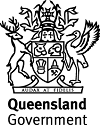Published Thursday, 25 January, 2018 at 10:30 AM

Minister for Environment and the Great Barrier Reef, Minister for Science and Minister for the Arts
The Honourable Leeanne Enoch
Ranger groups and other partners invited to help flying-fox research
Little red flying-foxes are travelling far and wide in search of flowering plants, according to initial results of a joint monitoring program by the Queensland Government and CSIRO.
Environment Minister Leeanne Enoch said the satellite tracking program, based in Charters Towers, was part of the Queensland Government’s $2.7 million investment to help councils improve management of flying-fox roosts in urban areas.
“Thanks to this satellite tracking program, researchers believe the recent influx of flying-foxes to Charters Towers was linked to a flowering event in the area, with melaleuca and bloodwood trees producing plenty of very sweet nectar at the time,” Ms Enoch said.
“Interestingly, of the 13 little red flying-foxes tagged so far as part of this research, none stayed in Charters Towers. Instead, they have travelled across much of north and central Queensland, covering hundreds of kilometres.”
Ms Enoch said the little red flying-fox was the smallest, most mobile and least understood of the four species of flying-fox in mainland Australia.
“They are also becoming increasingly challenging due to their tendency to move into roosts in urban and suburban areas,” she said.
“This research program is intended to improve management of little red flying-fox roosts by providing local governments with the information and knowledge they need to minimise the level of disturbance these animals regularly cause to communities across Queensland.”
Ms Enoch said the next step for the project was to enlist the aid of Aboriginal and Torres Strait Islander rangers, local governments, the Queensland Herbarium, and other partners to help increase understanding of what drives these animals’ behaviour.
“The Department of Environment and Science is inviting key partners to monitor little red flying-foxes across much of north and central Queensland to help collect information on where and when they go and why they behave the way they do,” Ms Enoch said.
“Stakeholder contributions would include reporting of previously unrecorded flying-fox roosts and feeding areas, investigation of new roosts revealed by the satellite tracked animals, and ongoing counts and observations of flying-fox camps using established methods.
Ms Enoch said the information collected would be fed in to the CSIRO research program, led by flying-fox expert Dr David Westcott.
“A key goal of the project is to understand how little red flying-foxes are distributed across north Queensland and how the changing food resources influence their movements,” Dr Westcott said.
“In the satellite tracking study conducted over the past year, we tracked 13 little reds from Charters Towers, up to 800km north to Cape York Peninsula, and more than 650km south to Carnarvon Gorge, Mr Westcott said.
“It’s likely to be the search for native flowering plants, which are their food source, which caused them to leave Charters Towers and travel so widely.”
Image caption: Some of the early results of the little red flying-fox tracking program. Each coloured line represents a little red flying-fox, tracked from Days 27 to 105, from Charters Towers and Tolga Scrub, and spreading from Holroyd River in Cape York Peninsula to just north of Rockhampton.
ENDS
MEDIA: Ben Doyle 0437 859 987

